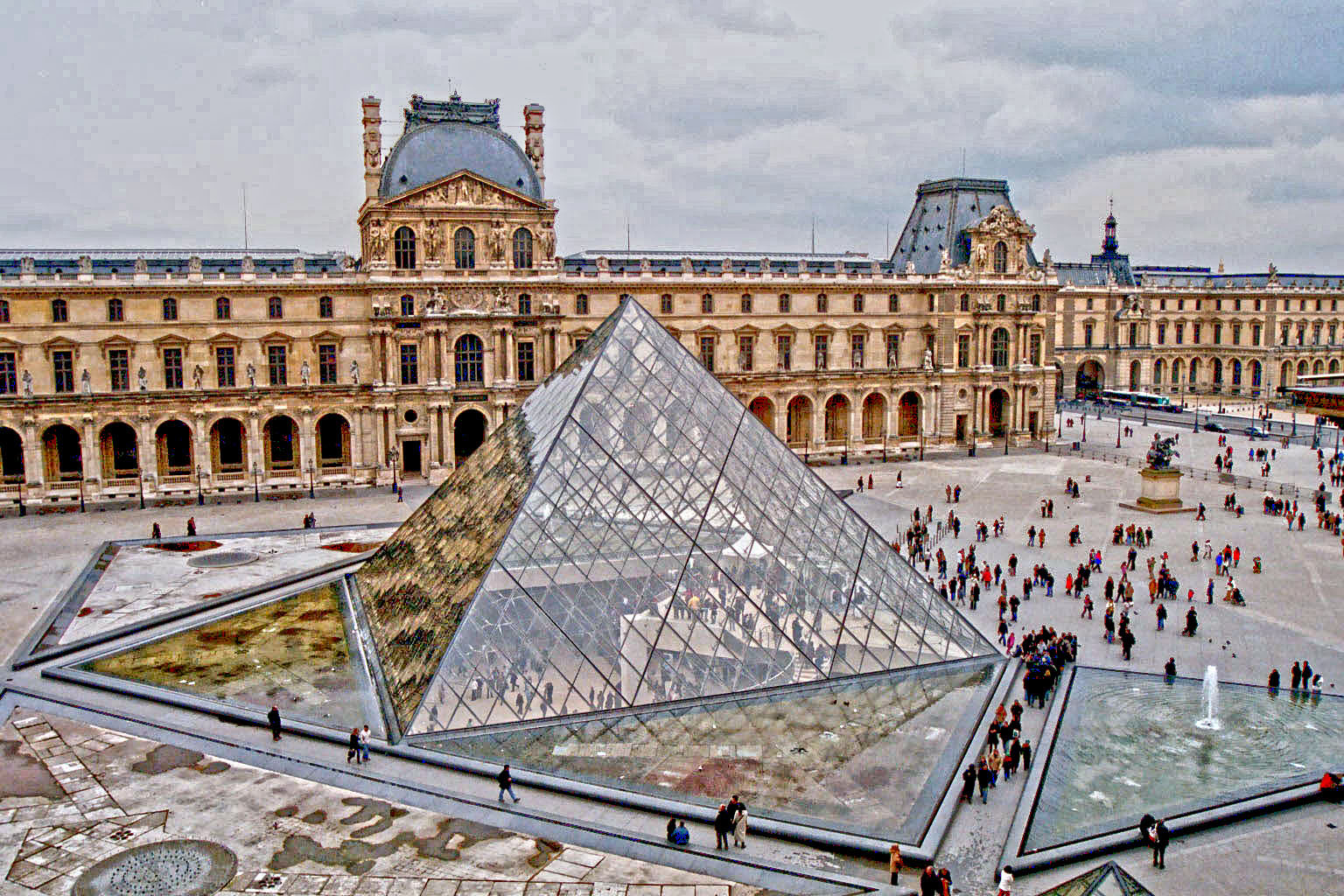The Louvre Palace & the Louvre Pyramid
The Louvre Palace & the Louvre Pyramid
The Louvre or Louvre Museum (Musée du Louvre) is one of the world's largest museums and a historic monument. A central landmark of Paris, France, it is located on the Right Bank of the Seine in the 1st arrondissement (district). Nearly 35,000 objects from prehistory to the 21st century are exhibited over an area of 60,600 square metres (652,300 square feet). With more than 8 million visitors each year, the Louvre is the world's most visited museum. The museum is housed in the Louvre Palace (Palais du Louvre), originally built as a fortress in the late 12th century under Philip II. Remnants of the fortress are visible in the basement of the museum. The building was extended many times to form the present Louvre Palace. In 1682, Louis XIV chose the Palace of Versailles for his household, leaving the Louvre primarily as a place to display the royal collection, including, from 1692, a collection of ancient Greek and Roman sculpture. In 1692, the building was occupied by the Académie des Inscriptions et Belles Lettres and the Académie Royale de Peinture et de Sculpture, which in 1699 held the first of a series of salons. The Académie remained at the Louvre for 100 years. During the French Revolution, the National Assembly decreed that the Louvre should be used as a museum to display the nation's masterpieces.
The museum opened on 10 August 1793 with an exhibition of 537 paintings, the majority of the works being royal and confiscated church property. Because of structural problems with the building, the museum was closed in 1796 until 1801. The collection was increased under Napoleon and the museum renamed the Musée Napoléon. After the defeat of Napoleon at Waterloo, many works seized by his armies were returned to their original owners. The collection was further increased during the reigns of Louis XVIII and Charles X, and during the Second French Empire the museum gained 20,000 pieces. Holdings have grown steadily through donations and gifts since the Third Republic. As of 2008, the collection is divided among eight curatorial departments: Egyptian Antiquities; Near Eastern Antiquities; Greek, Etruscan, and Roman Antiquities; Islamic Art; Sculpture; Decorative Arts; Paintings; Prints and Drawings.
The Louvre Pyramid (Pyramide du Louvre) is a large glass and metal pyramid, surrounded by three smaller pyramids, in the main courtyard (Cour Napoléon) of the Louvre Palace (Palais du Louvre) in Paris. The large pyramid serves as the main entrance to the Louvre Museum. Completed in 1989, it has become a landmark of the city of Paris.
Commissioned by the President of France François Mitterrand in 1984, it was designed by the architect I. M. Pei, who is responsible for the design of the Miho Museum in Japan and MasterCard Corporate Office Building in Purchase, New York, and Rock and Roll Hall of Fame Museum in Cleveland, and the National Gallery of Art (East Building) in Washington, D.C. among others. The structure, which was constructed entirely with glass segments, reaches a height of 20.6 metres (about 70 feet); its square base has sides of 35 metres (115 ft). It consists of 603 rhombus-shaped and 70 triangular glass segments.
http://www.louvre.fr/en
http://en.wikipedia.org/wiki/Mus%C3%A9e_du_Louvre
http://en.wikipedia.org/wiki/Louvre_Pyramid










Amit Banerjee 9. Oktober 2013, 0:50
Enslavement and Captivity are compared and contrasted in these two studies from the Louvre:The Rebellious Slave (Left) & The Dying Slave (Right), Michelangelo, 1513
Amit BanerjeeFour Captives Sculpture, 1686, Musée du Louvre, Paris
Amit Banerjee